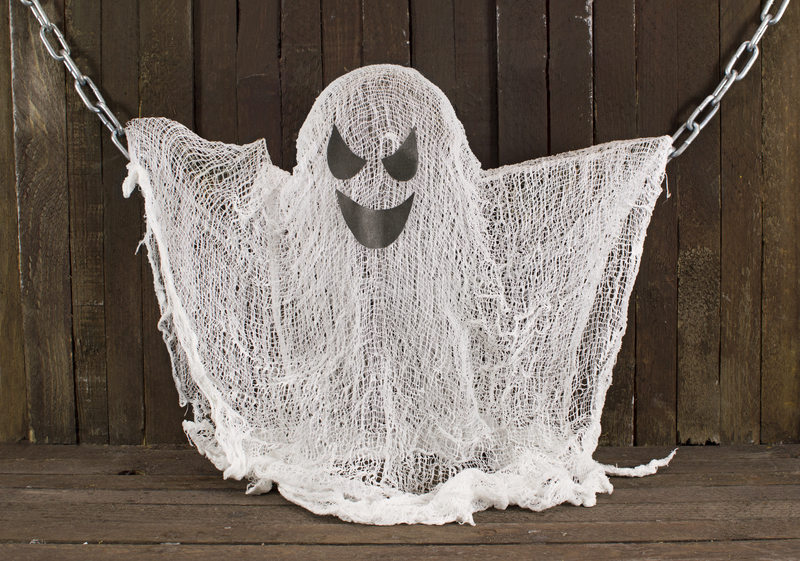Essential Protection Methods for Your Sofa in Storage
When it's time to put away your sofa, whether due to a move, downsizing, renovations, or simply reorganizing, it is imperative to safeguard your treasured furniture from damage. Proper sofa storage protection goes a long way in ensuring your upholstered treasures retain their beauty and functionality for years to come. In this comprehensive guide, we will unveil the most effective, expert-recommended, and actionable ways to shield your sofa while it lays in wait--covering everything from thorough cleaning routines to environmental controls and the best supplies.

Why You Must Prioritize Sofa Protection in Storage
Your sofa is likely one of your largest and most frequently used pieces of furniture. Unfortunately, extended periods in storage can make sofas vulnerable to damage, including:
- Moisture resulting in mold or mildew
- Dust accumulation and staining
- Pest infestations
- Sunlight or UV damage
- Physical deformations from improper placement
- Odors due to a lack of ventilation
Proper sofa storage protection methods help prevent these threats. By understanding each risk, you can proactively select the best sofa protection strategies tailored to your storage type, duration, and environment.
Preparing Your Sofa for Storage: First Steps
1. Deep Clean Your Sofa Before Storage
Before placing your sofa in any type of storage, ensure it is thoroughly cleaned. Dust, food crumbs, body oils, and pet hair can attract pests and promote mold if left unchecked.
- Vacuum all surfaces and crevices to remove debris and dirt.
- Spot clean stains using a manufacturer-recommended cleaning solution.
- For fabric sofas: Use a fabric-safe cleaner and allow thorough drying.
- For leather sofas: Apply a quality leather conditioner to prevent cracking.
2. Disassemble When Possible
Take apart removable sofa components, such as legs, cushions, or modular sections. This can make transport easier, help avoid damage to protruding parts, and allows for a more compact storage footprint.
- Wrap and label each part separately.
- Store hardware in a labeled plastic bag attached to the frame.
3. Allow for Complete Drying
Never store your sofa while it's damp. Moisture is the enemy in storage conditions; ensure all materials, especially foam and deep fabric, are bone dry. This reduces the risk of mold and mildew growth.
Choosing the Right Storage Space
Climate-Controlled vs. Standard Storage Units
For maximum sofa protection, opt for a climate-controlled storage unit. This helps regulate temperature and humidity, reducing risks associated with extreme cold, heat, or moisture fluctuations. Climate-controlled units are especially recommended for:
- Leather sofas
- Antique/Vintage or valuable pieces
- Long-term storage duration (over 3 months)
- Humid or variable climates
*If climate-controlled options aren't possible, choose a dry, elevated space with minimal direct sunlight and low humidity. Never store sofas outdoors or in unfinished basements or attics where temperature and moisture are uncontrolled.
Best Materials for Sofa Protection in Storage
Essential Supplies List
- Heavy-duty plastic furniture covers or sofa bags
- Moving blankets
- Bubble wrap or foam sheets (for delicate or wood components)
- Silica gel packets or moisture absorbers
- Packing tape or stretch wrap
- Pest deterrents (such as natural repellents or traps)
Plastic Covers vs. Fabric Protective Covers
Plastic sofa covers offer excellent protection against dust, pests, and moisture but can trap humidity if sealed too tightly. To mitigate this:
- Opt for breathable covers designed for furniture.
- Leave small openings or use vented covers to encourage air circulation.
- For *long-term storage*, layer a cotton or canvas cover under the plastic for moisture wicking and then cover with plastic for maximum sofa protection.
Positioning and Placement for Sofa Storage Safety
Keep Your Sofa Off the Floor
Placing the sofa directly on the storage unit floor exposes it to moisture, pests, and temperature extremes. Raise your sofa on wood pallets or caster platforms to allow for airflow underneath and lessen the risk of water damage in case of leaks or condensation.
No Stacking Heavy Items
Avoid placing heavy boxes or furniture on top of your stored sofa. Prolonged pressure can warp the frame or leave permanent impressions in upholstery and cushions. Instead:
- Store sofas upright or as they would sit in your home.
- If stacked temporarily for moving, distribute weight evenly and remove ASAP.
Advanced Tips for Protecting Your Sofa in Storage
1. Utilize Desiccants and Dehumidifiers
Silica gel packets or moisture absorbers can make a significant difference in keeping the storage environment dry. Place them beneath and around your sofa, but check and replace them regularly to maintain effectiveness.
2. Maintain Air Circulation
Airflow is essential! When wrapping your sofa, ensure there is some space for air movement. Avoid sealing covers too tightly to prevent trapped moisture, which is a leading cause of mold.
3. Guard Against Pests
Even in urban settings, pests can find their way into storage spaces. To protect your couch in storage:
- Use pest deterrent sprays or sachets specifically designed for storage.
- Inspect the storage unit for signs of rodents or insects before moving your sofa in.
- Avoid storing food nearby that could attract pests.
4. Shield from Sun and UV Exposure
Sunlight can fade fabrics and dry out leathers. If your storage unit has windows or areas of sunlight, ensure your sofa is covered with opaque materials. UV-resistant sofa covers can further enhance your couch storage protection.
Maintenance Checks and Long-Term Considerations
Regular Inspections
If accessible, periodically inspect your stored sofa for early signs of moisture, pests, or cover damage. This early action prevents minor issues from becoming catastrophes.
Re-Condition and Clean Upon Removal
After time in storage, clean your sofa again before use, paying attention to musty smells or signs of moisture. For leather, a fresh conditioning treatment revives texture and appearance. Fabric sofas may need deodorizing and vacuuming for dust removal.
Avoiding Common Sofa Storage Mistakes
- Avoid using cheap, thin plastic sheeting as it tears easily and is less effective against moisture and pests.
- Never wrap a damp sofa; always ensure it's dry to the touch at every layer.
- Resist over-packing the storage unit, which restricts airflow and increases crush risk.
- Don't forget to label components or hardware when disassembling for easy reassembly.
Specific Sofa Types: Tailored Protection Tips
Leather Sofas
- Use breathable covers and avoid high humidity to prevent mold and cracking.
- Apply a leather conditioner before storage for added suppleness.
- Keep away from heat sources or direct sunlight.
Fabric Sofas
- Choose thick, non-dyed cotton covers for breathability.
- Vacuum and clean all fabric surfaces thoroughly before wrapping.
- Protect from potential water leaks with an added plastic layer.
Wood-Framed or Antique Sofas
- Protect exposed wood with foam padding and bubble wrap over vulnerable corners.
- Keep the sofa elevated and away from potential knock hazards.

Quick Sofa Storage Protection Checklist
- Clean and dry the sofa completely.
- Disassemble large or detachable components.
- Wrap sofa using layered covers--cotton, then plastic, and moving blankets on corners.
- Raise off the ground using pallets or blocks.
- Use silica gel packs and pest repellent.
- Store in climate-controlled unit if possible.
- Avoid stacking objects on the sofa.
- Inspect periodically and address any issues promptly.
Conclusion: The Key to Long-Lasting Sofa Protection in Storage
Preserving your sofa's condition during storage demands attention to cleaning, proper wrapping, environmental factors, and suitable positioning. By leveraging these essential sofa protection in storage strategies, everyone can prolong the life of their couch, avoid costly repairs, and enjoy a fresh-looking sofa upon retrieval. Whether safeguarding a family heirloom or your favorite lounge spot, investing in proper storage protection is always worth the effort.
Shield your sofa today using these tried-and-true methods, and rest easy knowing your cherished furniture is safe, wherever it may be stored!



